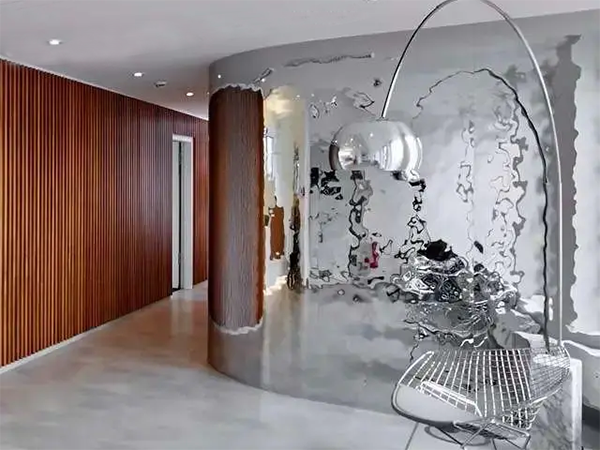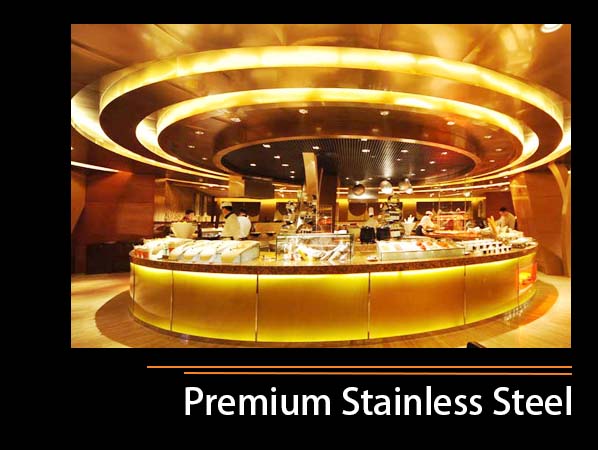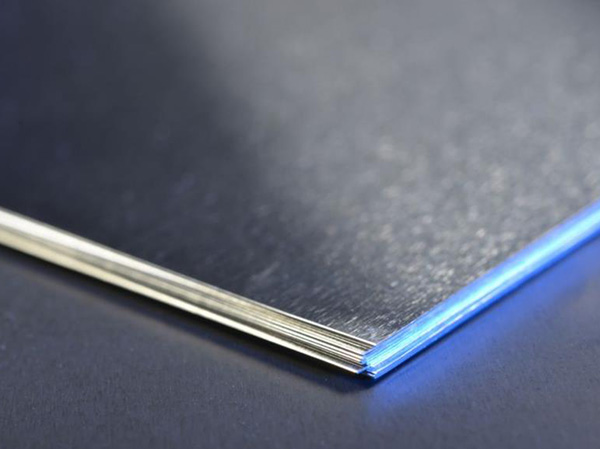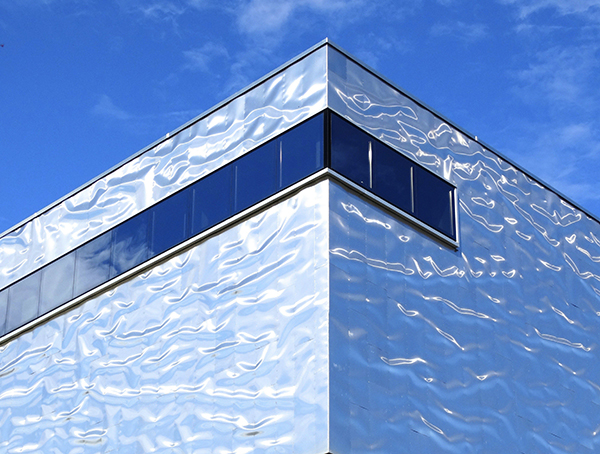
Key Points and
Precautions to Use Protective Films On Stainless Steel Sheets
Stainless steel protective film is widely used in the field of stainless steel processing, production and circulation. Generally, stainless steel materials that have been surface processed basically need to be protected by stainless steel protective film. Let's take a look at how to apply stainless steel film.
Usually used on the common surfaces, such as satin finish, HL or brushed finish, and BA finish. Satin and brushed surface needs to be covered with a stainless steel protective film with a slightly higher viscosity, usually above 70 viscosity, but BA panel requires a stainless steel protective film with a lower viscosity.
 Stainless steel
protective film for laser (laser film): usually used in laser cutting and processing.
Stainless steel
protective film for laser (laser film): usually used in laser cutting and processing.
Under normal circumstances, stainless steel plates used for laser cutting cannot use ordinary stainless steel films, but need to use special laser films; laser cutting processes include carbon dioxide laser cutting and fiber optic cutting machines, and fiber optic machines need to be protected by fiber optic films. In addition, the current rapid development of stainless steel laser cutting and processing equipment, laser cutting equipment with different wattages and produced by different manufacturers will also have certain differences in the coating of stainless steel plates. Special attention needs to be paid to the fact that the thickness and viscosity of laser equipment films with different wattages need to be adjusted accordingly according to the processing equipment. It is also necessary to apply laser films of different viscosities or fiber-specific films to different stainless steel surfaces.
Stretch
stainless steel protective film: The film material needs to be stretched or stamped later.
The main feature
of stretch film is that the protective film itself has a certain degree of
toughness and is suitable for stretching or stamping. In addition, the
appropriate viscosity and thickness of the stainless steel film are also key
points for laminating stretched and stamped parts. If the viscosity is not
enough, the film will easily blow up during the production process, failing to
protect the surface of the stainless steel. However, if the viscosity is too
high, it will be difficult to tear off the film of the stainless steel product
after stretching and stamping, requiring a lot of manpower to tear off the
film.

What Aspects Need to be Paid Attention to During the Film Application Process?
² The thickness of the adhesive film must be
uniform and there is no obvious thickness difference. At present, the thickness
of domestic adhesive films is generally between 0.04mm~0.07mm.
² The glue film is evenly coated with no glue
leakage, and degumming and glue layer transfer that affect the quality of the
processed board are not allowed to occur.
² The adhesive strength of the adhesive film
should comply with relevant national and industry standards and the viscosity
should be stable.
² The adhesive film surface should be flat
and smooth, without wrinkles, impurities, bubbles and foreign matter sticking
in, without holes or broken joints in the adhesive film that would affect the
board surface coating effect. The cuts at both ends should be smooth and
without sintering.
² Particles that may affect processing are
not allowed to exist on the surface of the film, especially for stamping films.
However, it is very difficult to be completely particle-free, so for the
adhesive film, some regulations can be made on the number, size and
distribution of particles.
² When choosing and using the adhesive film,
you should choose the appropriate adhesive film based on the use environment,
product use, object of use, and season of use. For example: 8K mirror finish
sheet uses low viscose in summer and medium viscose in winter; HL finish sheet
uses medium viscose in summer and medium and high viscose in winter; NO.4 sheet
uses medium and high viscose in summer and high viscose in winter.
Why Is It Difficult to Tear Protective Films?
The reason is almost always caused by the aging of the protective film due to being left for too long.
In the manufacturer's instructions, it mentions that the protective film must be removed within 6 months after the board leaves the factory, and the protective film must be removed within 10 days after processing and installation the panels.
If it exceeds the stipulated time, it can only be torn slowly.
Once again, kindly
reminded that if there are sheets in storage, the earlier ones must be used
first. Because the boards were usually stored at the bottom, pls make a
reasonable storage as the time.
How to Deal With Protective Film That Is Difficult to Peel Off?
First, try to peel off the film slowly at an angle of ∠90°. If fail, then use an electric fan or hot water to blow or iron the difficult-to-tear film. When the temperature reaches a slightly hot temperature, it can be peeled off.
How to deal
with degumming and glue residue?
There are four
main reasons for these problems:
 ² Long-term high temperature conditions (such
as exposure to the sun or close to high-temperature objects after product
installation) cause accelerated aging of the film.
² Long-term high temperature conditions (such
as exposure to the sun or close to high-temperature objects after product
installation) cause accelerated aging of the film.
² The use period has expired.
² There are chemical raw materials stuck on
the protective film.
² Influence of storage environment.
Solutions:
Ø Spray on the board surface with glue
residue, and let the glue removal liquid stay on the residual glue for about 10
seconds to fully soak into the residual glue.
Ø Wipe the spray with a wet towel and check
to see if the glue is removed. If there is still glue residue, repeat the first
step and use the same wet towel to wipe off the glue.
Ø After the residual glue is removed, spray clean water on the glue-removed area,
and use another wet towel to clean until the glue remover and other impurity
residues are removed.
Ø Wipe clean water with a dry cloth and
observe the surface to confirm the effect.






